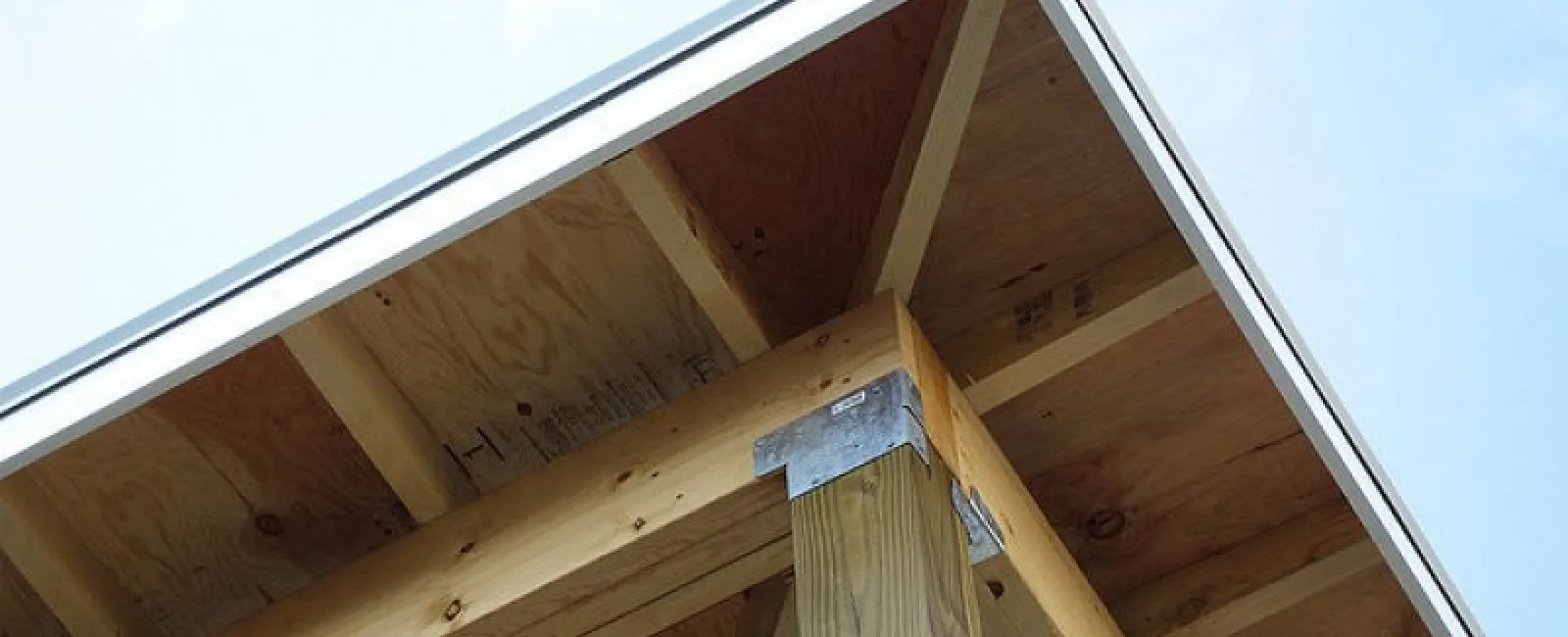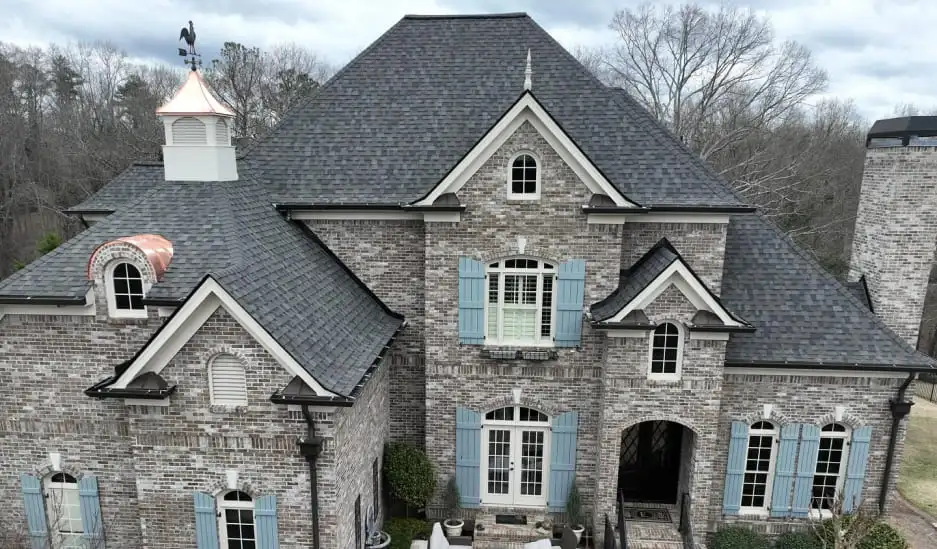Roswell and surrounding areas receive an average amount of precipitation, so you may be familiar with the term drip edges (or gutter aprons), which refer to a protective metal sheath that fits around the edge of your roof and protects it from moisture damage. These drip edges are becoming increasingly popular, not just in areas with heavy snow or rainfall, but also everywhere around the country — which is why Georgia has recently updated its building codes with drip edge requirements on new roofs, as noted by the Georgia Department of Community Affairs.
Drip edge advantages
Drip edges protect the roof from moisture seeping underneath the edges. Most rooftops are very good at preventing moisture from seeping in directly. Their membranes, shingles, flashing and slants all work together to direct rain away and down. But at the very edge of the roof, especially shingle roofs, there is a small space where water can seep in through the edge and back into the roof, underneath the shingles where it can do the most damage.
Ordinary rain does not usually cause these sorts of problems. But snow and ice, when melting on the edge of a roof, can seep backwards, up inside the roof. Hard rain driven by wind can also find these weak points. Drip edges protect homes from this sort of thing.
Does your house have drip edges?
The EPA recommends drip edges on all exposed roof edges. Even a little bit of moisture seeping into the vulnerable parts of the roof can cause serious problems with mold (and insurance companies frequently block coverage for mold remediation, as the costs can go so high).
If you are not sure if your home has drip edges installed, call a professional for a quick visit to check, because in some cases they can be hard to spot.
Installing drip edges
Installing drip edges on an old roof is tricky, because they are usually one of the first things to go on a roof. If you want the protection a drip edge offers, hire a contractor to tackle the project for you. If you want drip edges on a new house, make sure it is included in the plans and estimates you are using: Prices will vary based on where you use a drip edge and what materials you select.
There are quite a few different styles of drip edges to pick from. Some are minimalist, some offer ornate borders, some have vents to allow air in … they vary a lot. Some drip edges, like the sider’s edge, are designed to be easily taken off and replaced if necessary. Options like this could work well if you are installing an edge on an older rooftop.
Contact Findlay Roofing for any questions regarding drip edge installation.
Image source: Flickr



